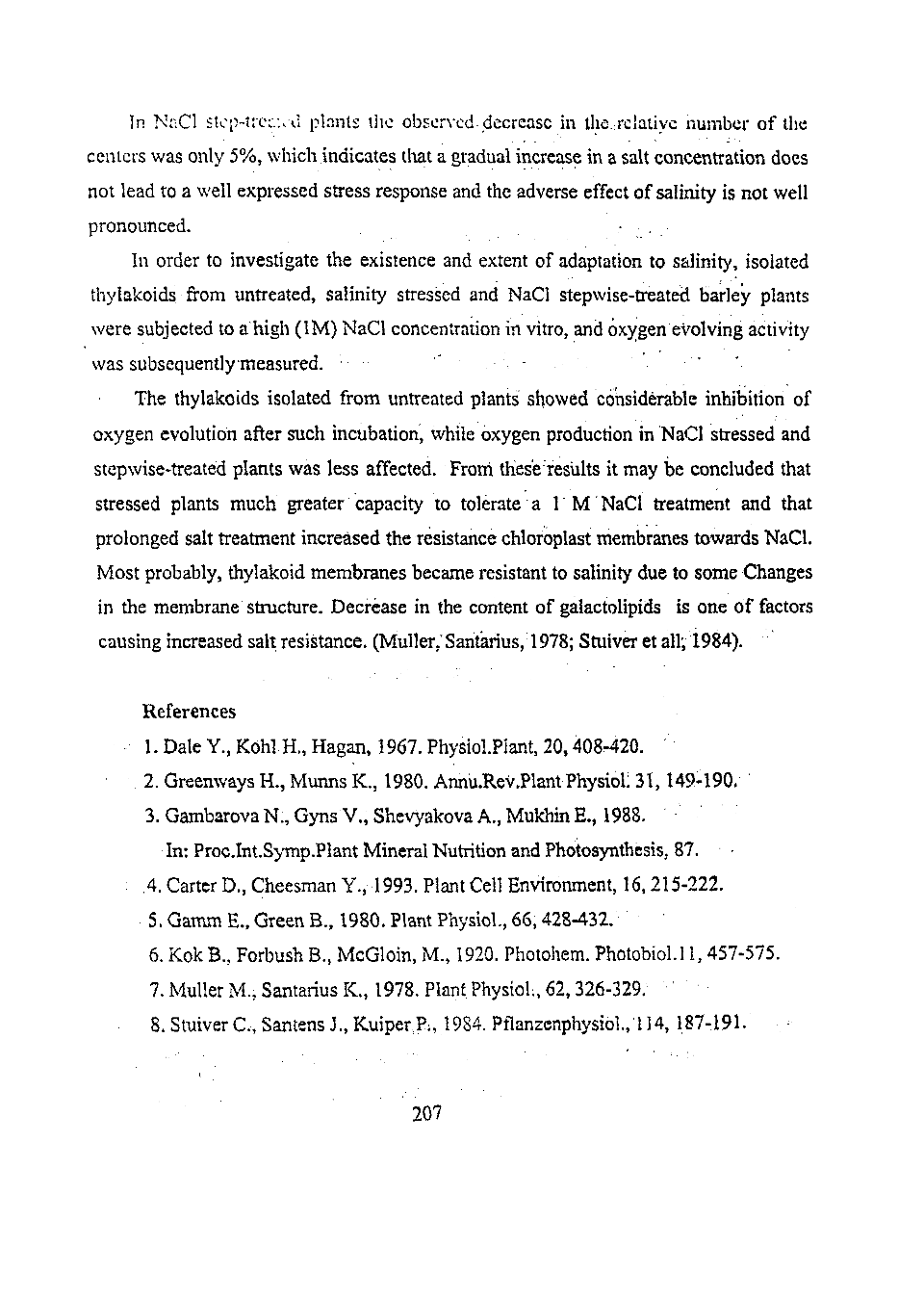
In NaCl step-treavu plants the observed decrease in the,relative number of the
centers was only 5%, which indicates that a gradual increase in a salt concentration does
not lead to a well expressed stress response and the adverse effect of salinity is not well
pronounced.
• .
In order to investigate the existence and extent of adaptation to salinity, isolated
thylakoids from untreated, salinity stressed and NaCl stepwise-treated barley plants
were subjected to a high (1M) NaCl concentration in vitro, and oxygen evolving activity
was subsequently measured.
The thylakoids isolated from untreated plants showed considerable inhibition of
oxygen evolution after such incubation, while oxygen production in NaCl stressed and
stepwise-treated plants was less affected. From these results it may be concluded that
stressed plants much greater capacity to tolerate a 1 M NaCl treatment and that
prolonged salt treatment increased the resistance chloroplast membranes towards NaCl.
Most probably, thylakoid membranes became resistant to salinity due to some Changes
in the membrane structure. Decrease in the content of galactolipids is one of factors
causing increased salt resistance. (Muller; Santarius, 1978; Stuiver et all; 1984).
References
- 1. Date Y., Kohl H., Hagan, 1967. Physiol.Plant, 20,408-420. '
2. Greenways H., Munns K., 1980. Annu.Rev.Plant PhysioL 31,149-190.
3. Gambarova N., Gyns V., Shevyakova A., Mukhin E., 1988.
In: Proc.Int.Symp.Plant Mineral Nutrition and Photosynthesis, 87.
.4. Carter D., Cheesman Y., 1993. Plant Cell Environment, 16,215-222.
5. Gamm Е.» Green B., 1980. Plant Physiol., 66,428-432.
6. Кок B., Forbush B., McGloin, M., 1920. Photohem. Photobiol.l 1, 457-575.
7. Muller M., Santarius K., 1978. Plant Physiol,, 62,326-329.
8. Stuiver C., Santens J., KuiperP;, 1984. Pflanzenphysiol, 114, 187-191.
207
Электронная Научная СельскоХозяйственная Библиотека








